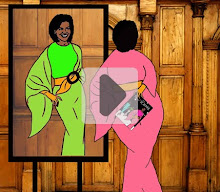Sometimes I reach the point where I cannot do it anymore. This is one of those times. I’m starting the Labor Day weekend early and will remain on a mental break throughout.
Feel free to carry on discussions regarding the necessity of securing the border between Afghanistan and Tajikistan but not our southern border, devastation in the path of Ida, COVID/Delta/Lambda/Ivermectin, to vax or not to vax, or whatever else is on your mind. I shall be dabbling in food, art, music and nature. Join me if you will, or carry on the good fight, the choice is yours as we are all individuals.
Today I’m visiting Camille Pissarro.
Generally referred to as a Danish-French Impressionist, Jacob Abraham Camille Pissarro was born nearly 200 years ago in St. Thomas, Virgin Islands which was then a West Indies Danish colony. His father was a French citizen of Portuguese Jewish descent, and his mother was Creole, a native of Danish Antilles.
He was a classically trained artist, having been sent to a French boarding school at age 12. Somehow, after having seen Paree, his father expected him to return to work in his business in St. Thomas, which he did for 5 years. At that point he left to spend 2 years painting and sketching in Venezuela before returning to Paris in 1855 to take master classes at the École des Beaux-Arts and Académie Suisse.
While a fairly successful artist, Pissarro was eclipsed by Claude Monet, the emblematic practitioner of the Impressionist style at the time. Pissarro’s influence on the genre may be underestimated – he offered substantial contributions to Impressionist theory and served somewhat as a mentor to Paul Cezanne, Edouard Manet, Pierre-Auguste Renoir, and Paul Gauguin. (More on his life here)
A very small selection from his works:
A pre-impressionist painting from St. Thomas.
Antilian Landscape, St. Thomas, 1856
Pissarro considered himself an anarchist. Then again, at the fin de siècle anarchy didn’t mean what “anarchy” means today. Back then it meant a rejection of authority, not necessarily by trashing public buildings and burning down private businesses. It simply recognized the supremacy of the individual’s independence over that of any constructed government’s right to dictate to us. There were certainly worst politics at the time, and today.

























